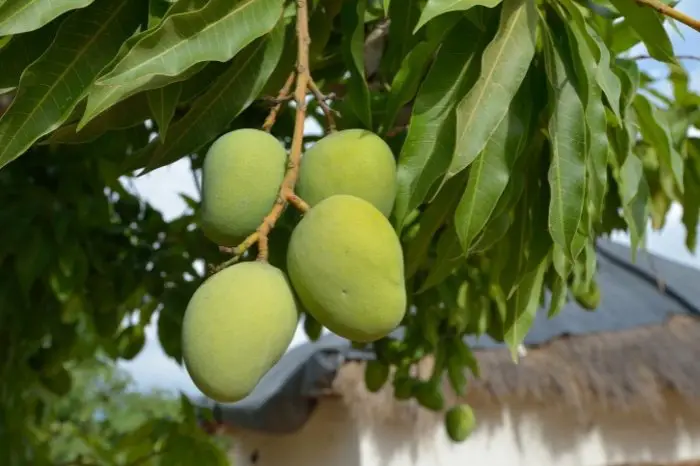Last Updated on January 20, 2023 by Urska
Have you ever wondered what’s the difference between a taproot system and a fibrous one? Not all roots are the same, and as an enthusiastic gardener, you need to understand what each does.
Both of these root formations serve to keep the plant established, fed, and thriving. But different roots result in clear differences in the plant, including appearance, resistance, and growth.
The taproot system is newer; it evolved from the fibrous root. The simplest example we can think of is the carrot. Read on to find out which one is more hardy and beneficial for the plant.
Taproot System
Taproot is a type of root formation with one dominant root, larger than the others. It grows straight and vertically downwards with a tapered shape near the end. It can grow from 2 to 60 inches in length, depending on the plant. The taproot is the large primary root, but secondary and tertiary smaller roots can grow from it occasionally.
But what is a taproot system? The taproot starts just like the fibrous root. As the plant grows, one of the small roots becomes larger and evolves into a primary root. The whole system includes the primary root, together with the smaller roots that might develop from the main root at a later stage.

There are several reasons why a taproot is valuable for the plant. It helps establish the plant, making it harder to remove or break. Moreover, taproot plants are hardy as the root helps them reach water deep into the ground and store food.
Most of the root vegetables like carrots, radishes, and turnips come from a taproot. That is the reason why these vegetables are crisp, watery, and very nutritious.
The Evolution Of The Taproot System
We mentioned that this is a newer root, but what does a taproot system come from? All roots form in the embryonic stage as the seed germinates. The seed’s radicle grows into a primary root, branching out into secondary roots.
The secondary roots branch out into tertiary and so on. But the radicle dies, later on, leaving the plant with numerous small roots or a fibrous root system.
This is not the case with taproot plants. In these species, the radicle doesn’t die but keeps on developing into a sizeable primary root.
With time, some taproots developed into storage organs, and most of them are edible.
Taproot: The System for Root Cause Analysis, Problem Investigation & Proactive Improvement
Parts Of Taproot System
Finally, how many primary roots in taproot system? There’s only one primary root. Secondary roots grow out of it and develop tertiary roots. The tertiary roots develop rootlets. The primary root is the fleshy, watery part, while the smaller roots are absorbing.
These smaller roots increase the surface from which the main root feeds, enabling it to intake more water and minerals from the soil.
The primary root comes in 3 shapes:
- Napiform Root – expansive top with a tail forming at the bottom, found in turnips;
- Conical – straight and steadily narrow, found in carrots;
- Fusiform – egg-like, wide in the middle and narrowing towards the top and bottom, found in radishes.
Click Here to Learn About:
- The Best French Flower For Your Garden
- Is Soil A Heterogeneous Mixture? A Quick 5 Minute Explanation
Differences Between Taproot and Fibrous Root
We clarified which are the taproot system parts and what they do, but how do they compare to the fibrous root? The taproot evolved from the fibrous system, but they have more than one difference. Here are the most important ones.
- Number of Roots: Taproot plants have a single root with smaller absorbing roots emerging from it. The fibrous system is made out of numerous branching roots of similar size.
- Roots Size: Taproots are longer and thicker. Fibrous roots are thin, almost hair-like, and short.
- Roots Position: Taproots grow downwards, underground, taking up more surface area. Fibrous roots grow horizontally, aerially, and closer to the soil’s surface.
- Attachment Strength: Plants with taproots are more securely attached to the ground and hard to transplant or remove, unlike those with fibrous roots.
- Separation: In taproot systems, the secondary, tertiary, and rootlets grow from the main root. In fibrous systems, all roots grow from the stem of the plant.
- Hardiness: Plants with taproots are typically hardy as these roots can source nutrients and water from deeper into the ground. Fibrous roots are closer to the surface and more prone to suffer from drastic weather changes.
- Food Storage: Taproots have evolved as food storage parts of the plant, making it hardy and able to withstand drought periods. Fibrous roots don’t store any food or nutrients for the plant.
- Leaf Types: The leaves of the plants mimic the shape of the roots. So in taproots, the veins on the leaves are in a reticular system, while in fibrous roots, they’re vertical.
- Plant Types: Carrots, radishes, beetroots, turnips are taproot plants. Some plants with fibrous root plants are grass, maize, wheat, onion, and orchids.
Interesting Plants With Taproot System
Mango is one of the plants with the largest taproot system. The primary root of an adult mango tree grows up to 20 feet deep into the ground. Secondary roots spread out horizontally from the main root. They develop tertiary roots, which further form rootlets. This system helps a grandiose tree like the mango stay stable and well-anchored.
Just like in smaller taproot plants, the roots of the mango pack a good portion of nutritious benefits. They’re not edible but are used in folk medicine due to their anti-inflammatory, anti-emetic, and healing properties.

Final Say: What You Must Know About The Taproot System
Together with the leaves, roots are responsible for keeping the plant healthy and thriving. Fibrous root systems were the first to form, and the taproots evolved from them.
Taproots spread out to a bigger surface and deeper into the ground, keep the plant well anchored, store food and water. In addition, some of these plants have edible roots, which are both nutritious and delicious.
FAQ’s
What is a taproot system?
A taproot system is a vertical primary root with up to 20feet in length that tapers near the bottom. It can develop secondary and tertiary horizontal roots and rootlets that feed the primary root.
What does a taproot system come from?
The taproot comes from the radicle of the seed. In plants with fibrous roots, the radicle dies out in the embryonic phase, but in taprooted plants, it develops into a primary root. Therefore, the taproot is has evolved from the fibrous root.
How many primary roots in taproot system?
There's one large primary root in taproot plants.
Taproot system parts and what they do?
The taproot system is made out or an extended and thick primary root with thinner secondary horizontal roots, tertiary roots and rootlets.
Mary is a passionate gardener who loves spending her days getting her hands dirty and nurturing her plants. She‘s an avid reader of gardening magazines and is always looking for new ways to make her garden thrive. When not outside tending to her plants, Mary can be found inside reading up on the latest gardening trends, comparing notes with fellow gardeners, and finding the perfect pottery planter for her next planting project.



